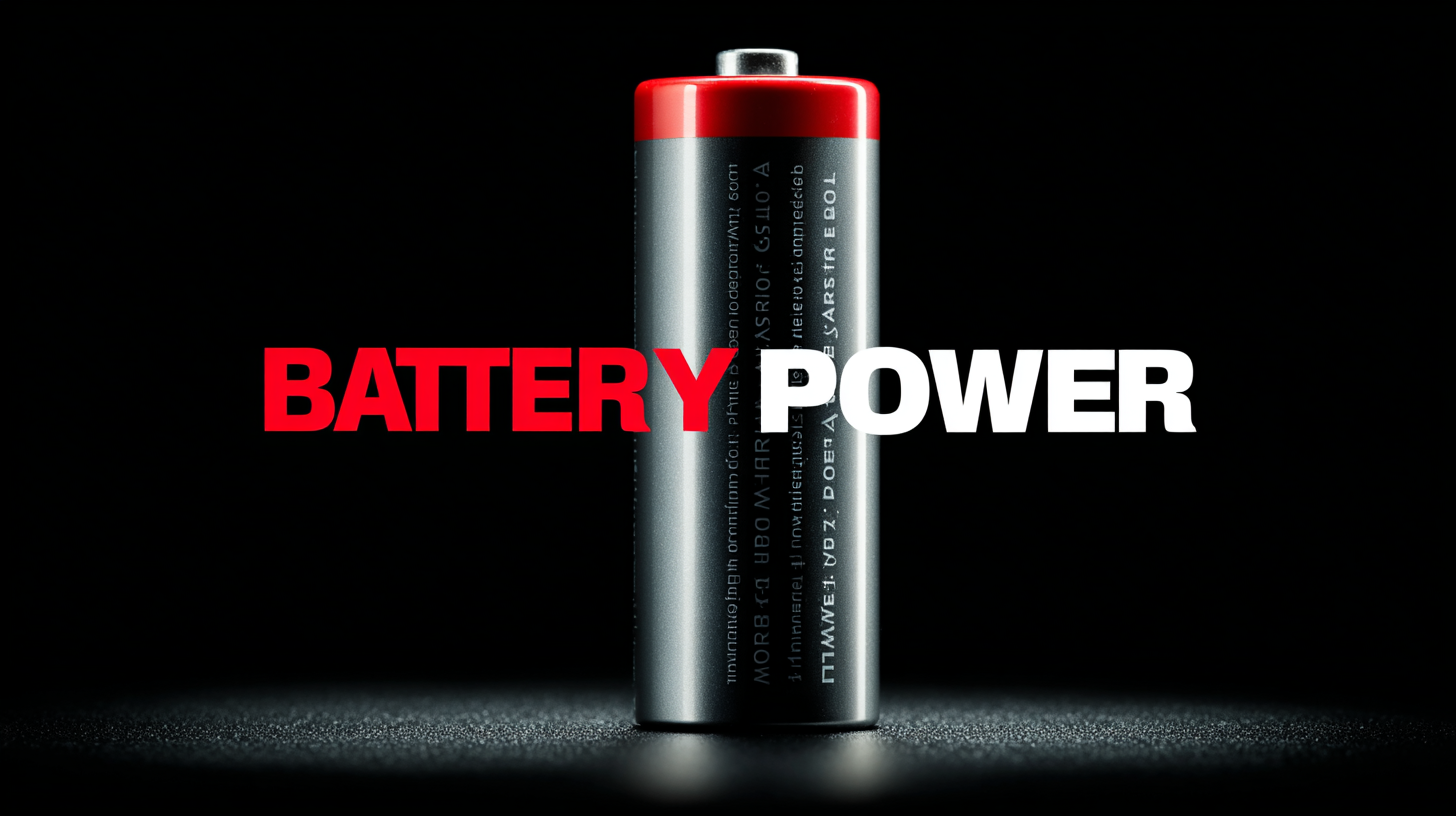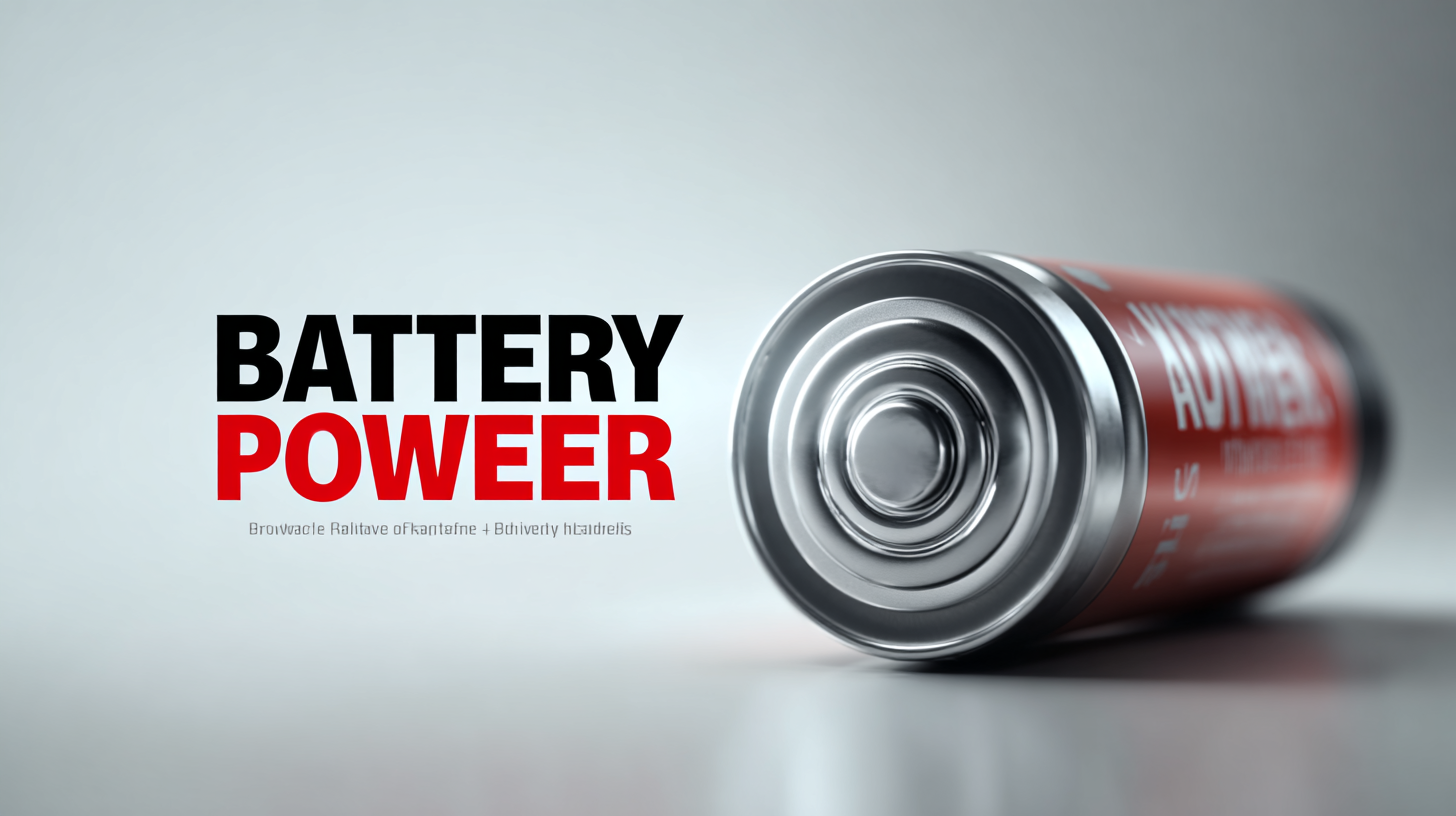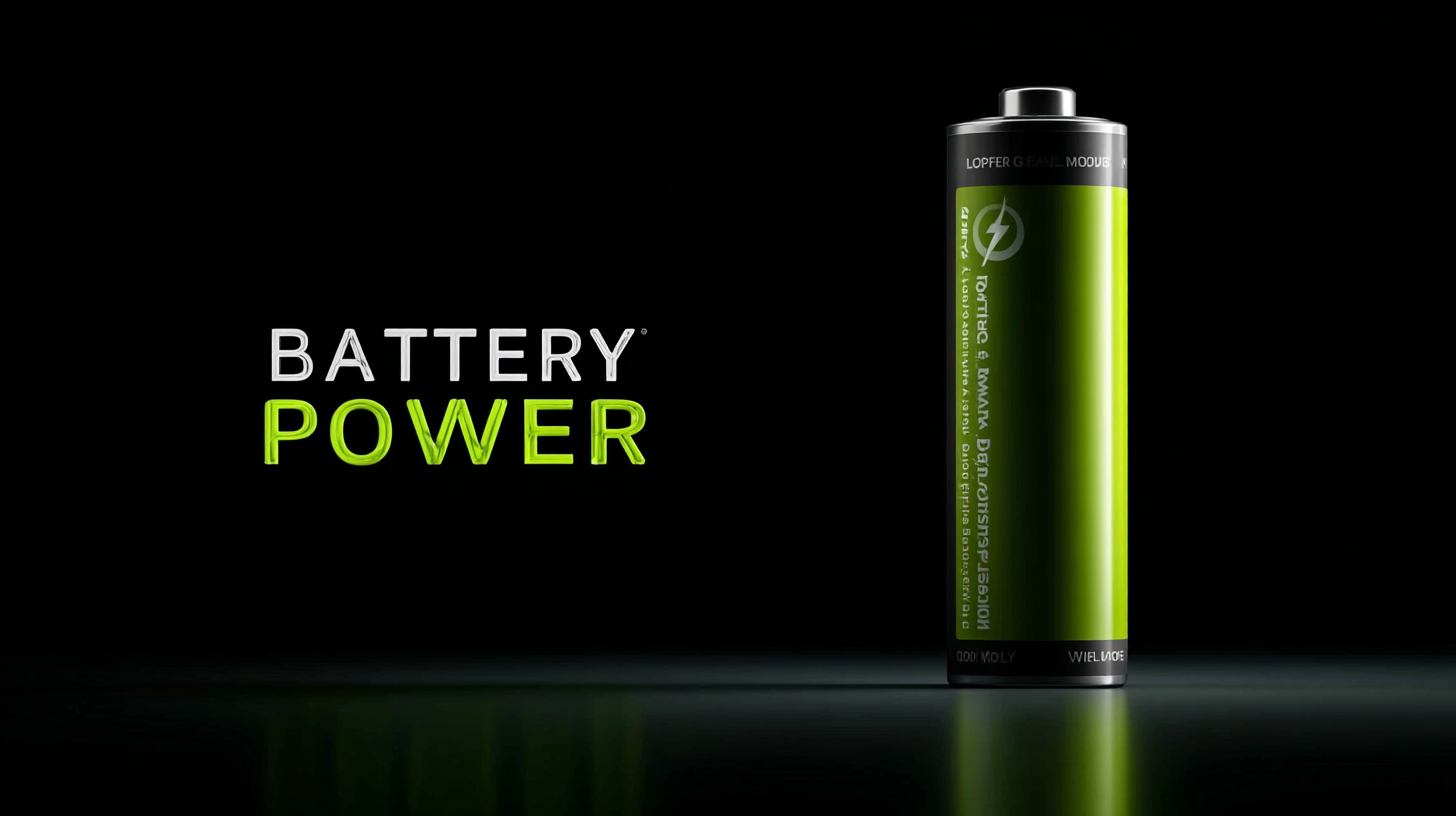Ultimate Guide to Best Battery Power for Maximizing Energy Efficiency in Modern Industries
In today's rapidly evolving industrial landscape, the demand for efficient energy solutions has never been greater. A recent report from the International Energy Agency highlighted that battery power could account for over 30% of global energy storage systems by 2040, driven by advancements in technology and the increasing need for renewable energy integration. As industries strive to enhance their sustainability practices, understanding the benefits and applications of various battery types becomes essential. From lithium-ion batteries, known for their high energy density and longevity, to emerging solid-state options that promise enhanced safety and performance, each battery type offers unique characteristics suited to specific industrial needs. This guide explores the advantages of different battery power technologies, illustrating how the right choice can optimize energy efficiency and support the transition to greener industrial operations.

Understanding the Importance of Battery Power in Energy Efficiency for Modern Industries
In today's rapidly evolving industrial landscape, the importance of battery power in enhancing energy efficiency cannot be overstated. As industries strive to reduce their carbon footprints and operational costs, the integration of advanced battery technologies becomes pivotal. Battery systems, particularly those utilizing lithium-ion and solid-state technologies, offer a versatile and reliable solution for energy storage, enabling industries to optimize their energy usage and reduce peak demand charges. With the ability to store excess energy generated during off-peak hours, these systems facilitate a smoother transition to a more sustainable energy model.
Moreover, the role of battery power extends beyond just energy storage; it is crucial for powering operations in various sectors, including manufacturing, logistics, and renewable energy applications. Innovative battery solutions provide the reliability and efficiency needed to manage intermittent renewable energy sources, such as wind and solar. By harnessing these technologies, industries can improve their energy management systems, ensuring continuous operation while significantly lowering emissions. The shift towards battery power is essential not only for meeting regulatory requirements but also for fostering a culture of sustainability within modern industries.
Energy Efficiency in Modern Industries: Battery Power Usage
This bar chart illustrates the battery power consumption in different modern industries, highlighting the critical role of battery power in enhancing energy efficiency.
Key Features to Look for in High-Efficiency Battery Solutions
When evaluating high-efficiency battery solutions for modern industries, several key features should be at the forefront of your decision-making process. First and foremost, the energy density of the battery is crucial. Batteries with higher energy density can store more energy in a compact form, which translates to longer operational times and reduced frequency of recharging. This is particularly important in sectors like manufacturing and logistics, where downtime can significantly impact productivity.
Another vital aspect is the battery’s lifecycle and sustainability. Opting for batteries that offer longer lifespans and can withstand numerous charge cycles reduces waste and enhances overall energy efficiency. Additionally, consider the temperature range and operational stability of the battery. Batteries that maintain efficiency across a wider range of temperatures can perform better in various industrial environments, ensuring reliability and reducing the risk of failure.
Lastly, integration capabilities with existing systems should not be overlooked, as seamless compatibility can streamline operations and maximize the use of energy-efficient technologies.
Cost Analysis: Evaluating Maintenance Costs and After-Sales Services
In evaluating the maintenance costs associated with battery power in modern industries, businesses must consider both the direct expenses and the hidden costs that can accumulate over time. Studies have shown that maintaining electric vehicles (EVs) can be significantly cheaper than traditional gas-powered vehicles, with maintenance costs for EVs being up to 30% lower after three years. This not only includes savings on parts and labor but also reflects a shift toward a more sustainable operational model. As industries increasingly adopt battery power, understanding these financial implications becomes essential.

Moreover, as manufacturers invest in improved maintenance technologies, they report substantial savings — some as high as 35% to 45% reductions in downtime. This investment translates into lower maintenance costs, enabling companies to allocate resources more efficiently. Additionally, businesses must analyze after-sales services as part of their cost analysis. A comprehensive approach that incorporates both immediate maintenance requirements and long-term service agreements can enhance energy efficiency and profitability for companies embracing battery technology in their operations.
Step-by-Step Guide to Selecting the Right Battery for Your Industry Needs
When selecting the right battery for your industry needs, it's essential to approach the decision with a systematic methodology. Start by understanding the specific energy requirements of your applications. According to a recent industry report, over 60% of industrial facilities have identified battery efficiency as a critical factor in reducing operational costs and enhancing productivity. This emphasizes that the selection process should hinge on the energy capacity and discharge rates of the batteries in question.

Next, consider the environmental conditions and longevity expectations. Many industries face unique challenges, such as extreme temperatures or humidity levels that can affect battery performance. Research indicates that batteries designed for harsh environments can outperform standard options by 30% in terms of lifespan and reliability. By prioritizing these factors, industries can ensure they choose batteries that not only meet their current needs but are also adaptable for future developments.
Finally, remember to weigh the total cost of ownership. A comprehensive study showed that while initial costs may be higher for advanced battery technologies, the long-term savings in maintenance and energy efficiency can yield a return on investment of nearly 200% over five years. This detailed selection process ultimately enhances energy efficiency and contributes significantly to overall operational sustainability.
Tips for Maximizing the Longevity and Performance of Industrial Batteries
In the pursuit of maximizing energy efficiency in modern industries, the longevity and performance of industrial batteries play a crucial role. Recent advancements in thermal management solutions, such as immersion cooling technology, have shown significant potential in enhancing both safety and efficiency of battery systems. For instance, studies indicate that effective thermal management can improve battery performance by up to 25%, which translates to longer operational lifetimes and reduced maintenance costs.
Moreover, the integration of wireless battery management systems (BMS) facilitates optimized cooling efficiency, allowing for real-time monitoring and adjustments based on operating conditions. Such systems can decrease the risk of thermal runaway incidents—an essential consideration as the battery industry trends toward larger-scale implementations.
As evidenced by the latest findings, a surge in the production of sodium-ion battery cathode materials has also marked a notable shift in energy storage solutions, enhancing recyclability and environmental sustainability. This shift aligns with market reports forecasting a substantial boom in battery recycling, expected to exceed $100 billion as electric vehicle adoption drastically increases by 2025.
Investing in these innovative technologies is not merely a choice but a necessity for industries aiming to boost energy efficiency, enhance safety, and reduce costs in a rapidly evolving market landscape.
